On our recent trip from Zion National Park back to Las Vegas where we were catching our flight home we decided to explore a ghost town in the small town of Grafton, Utah. As we followed our GPS, and the paved road turned to gravel we started to feel like we were really out in the middle of nowhere. We passed one or two houses on the way and tried to keep our speed slow so as not to kick up dust and make a lot of noise, but it was hard not to on that bumpy road. For about two miles more we saw no houses at all and wondered if we were going in the right direction. It was sort of creepy, and the banjo music from the Robert Duvall movie “Deliverance” kept playing in my head.
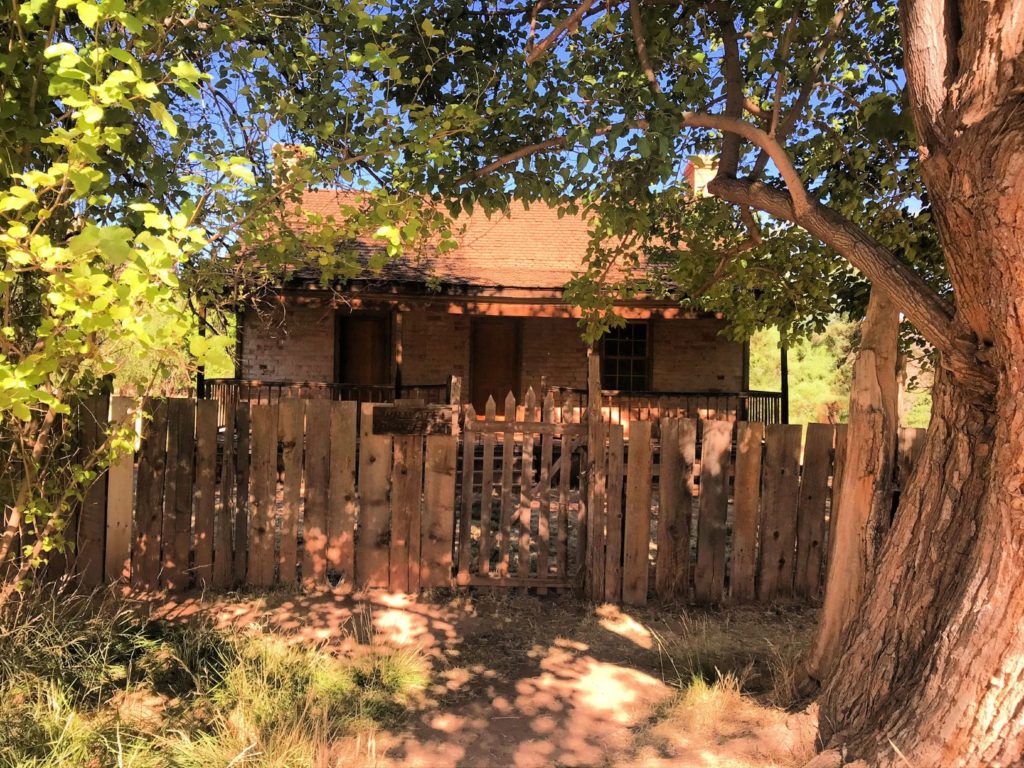
This post contains affiliate links, and I may earn a commission if you click the links at no additional cost to you. All opinions are my own.
How to Get There
Grafton is right outside of Zion National Park and is reached from the tiny town of Rockville along Highway 9. Going south on a residential street called Bridge Lane, you cross the Virgin River on an old historic single-track iron bridge (constructed in 1924), and then west, along the base of the rugged low red cliffs of Moenkopi sandstone that stand guard over this beautiful lush green river valley.
After 1 1/2 miles the main road curves back south, goes up into the hills, and becomes the Smithsonian Butte Road, a 9-mile scenic back highway through mesas, canyons, and valleys that eventually meets Highway 59. At the point where Bridge Lane curves south, an unpaved road continues for another two miles to the actual ghost town.
After the two miles of dirt road, we finally came up to a clearing and saw an old graveyard. What made it so eerie was how completely quiet and isolated it was out there in the middle of the Utah cliffs and valleys. It seemed surreal that real people were actually buried there so long ago.
It was perfectly still except for a slight breeze, and there was not a soul in sight. We were completely alone out there … or were we? The silence only made the place seem even more creepy. Someone had placed pinwheels randomly in the ground, and they made an eerie whirring sound when the breeze picked up. We saw that the gate was unlocked so we went in. Isn’t that what Nancy Drew would do? It was incredible reading the epitaphs on the headstones from so long ago.
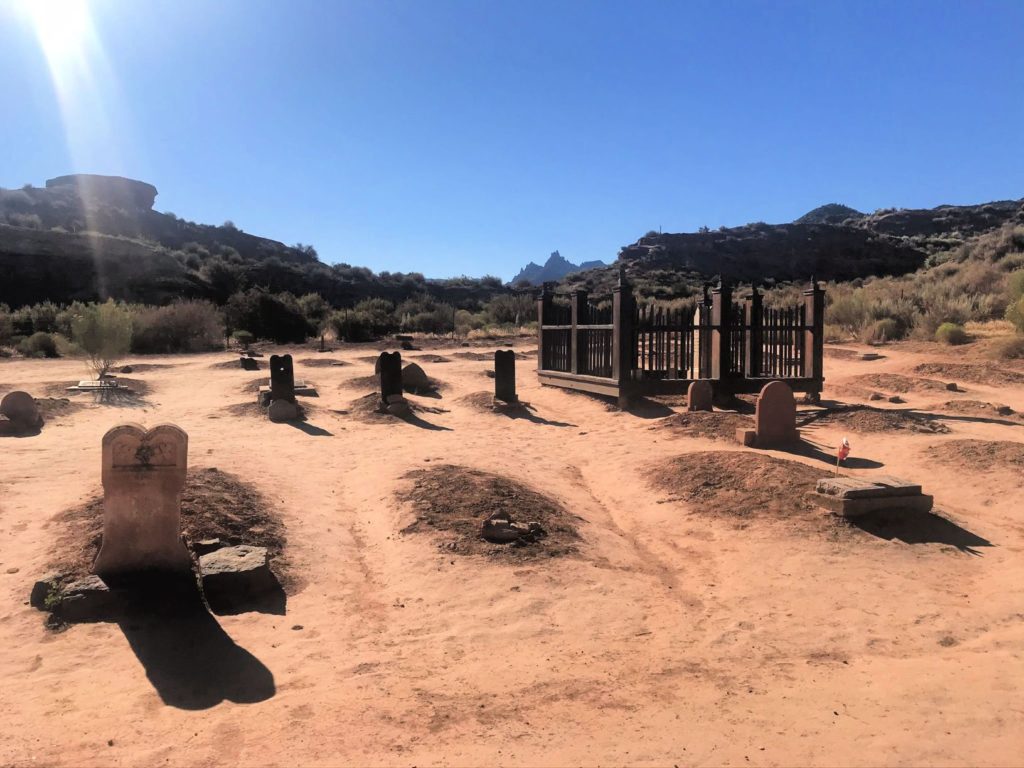
Grafton Cemetery
The old cemetery contains a few dozen graves from as old as 1860 to 1910. The headstone inscriptions tell a story of a very harsh life long ago. I learned that three Berry brothers and one wife were all killed by Indians on April 2, 1866. The Berry memorial is the largest one. It sits in the very center of the graveyard enclosed by a wooden fence for protection.
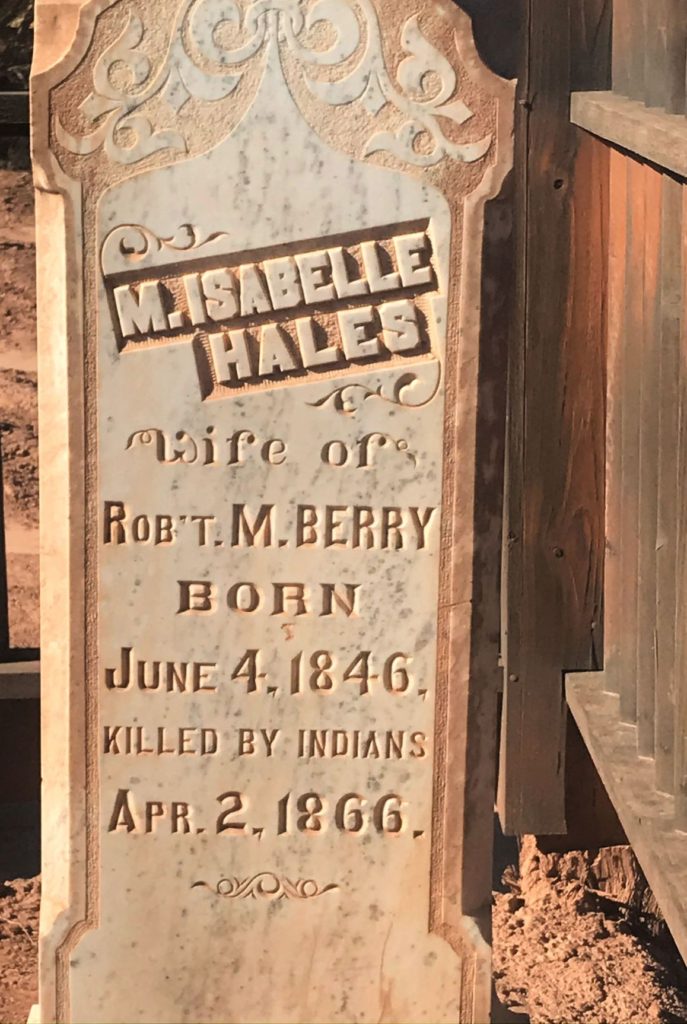
What was really sad was reading that the five children of John and Charlotte Ballard all died very young between 1865 and 1877. The oldest was only 9 years old. The Ballard parents are also buried there. There are six babies buried there, all under one year old. They died in 1891 and 1901. Several Native Americans are also buried in the cemetery.
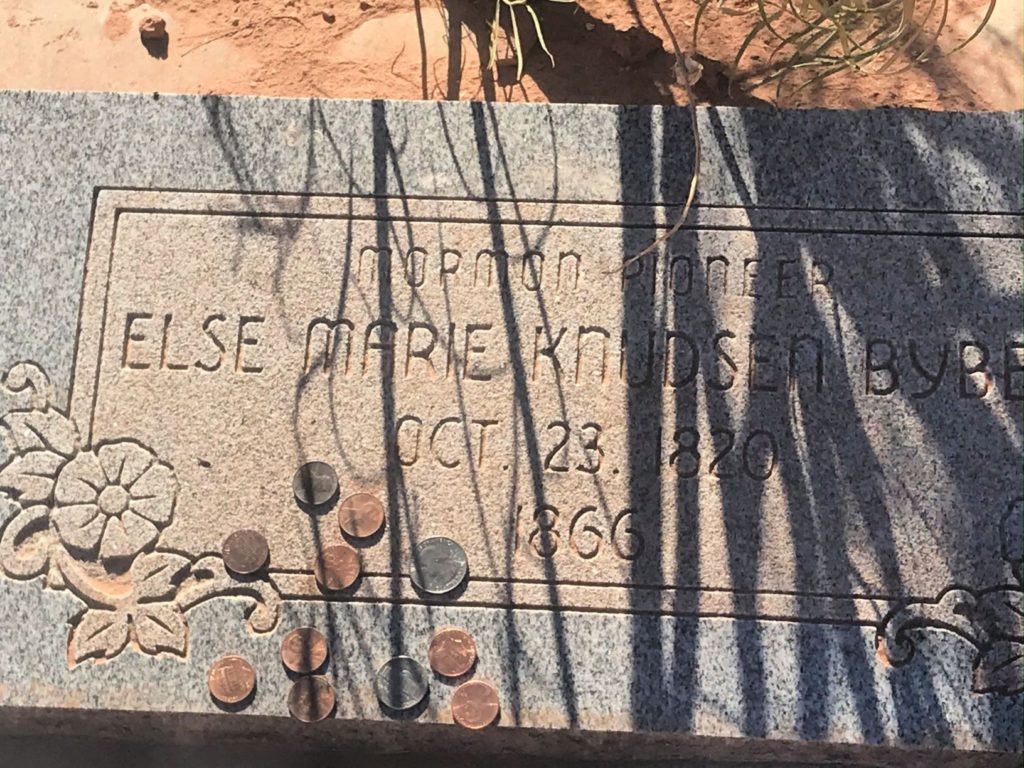
Planning a trip out west? Check out Trip Advisor for hotel deals and reviews. Or try staying in a nice Airbnb.
Grafton Ghost Town
After visiting the graveyard we drove further until we finally reached the town. The town is only a quarter of a mile from the main highway to Zion National Park, but very few people visit since it is on the opposite side of the river, and can only be reached by a 3 1/2-mile road (that is unpaved for the last 2 miles). There are also very few signs.
Settled by Mormon pioneers in 1859, this abandoned frontier town near Rockville, Utah has been the backdrop for several films including “Butch Cassidy and the Sundance Kid.”

Five large buildings remain, out of the original total of over 30, and all have been carefully restored by the Grafton Heritage Partnership, who now manage the site. The surrounding farmland and orchards are still used by a nearby ranch, and a few people still live in other houses in the sparse neighborhood.
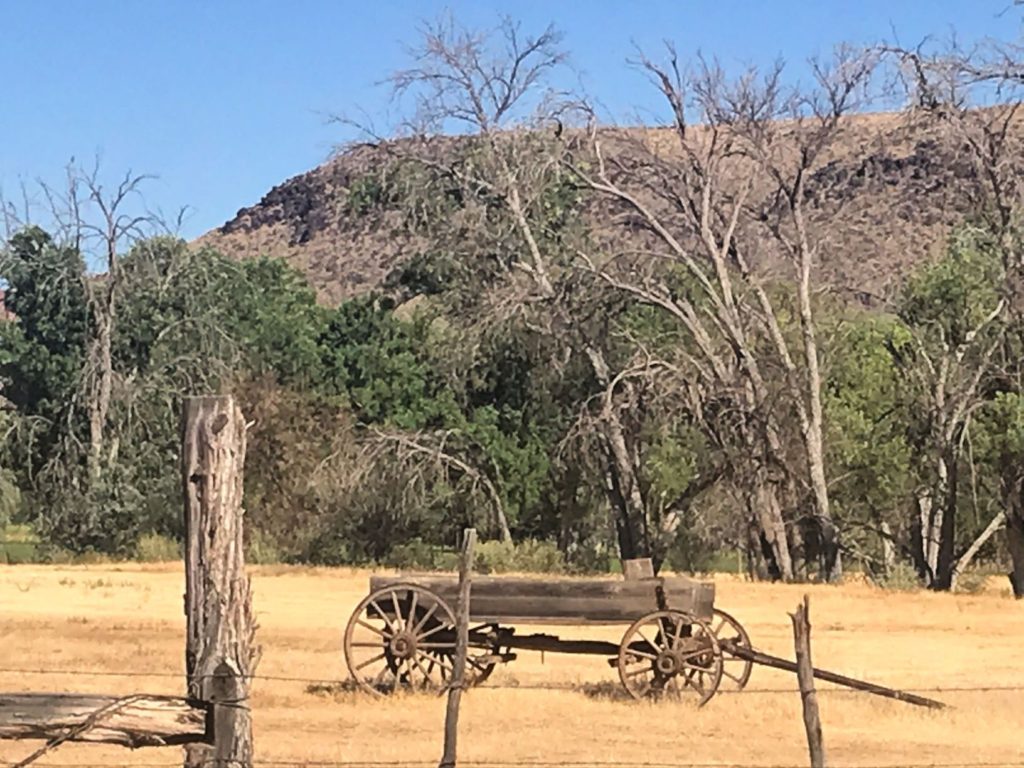
Some parts of the former village are fenced off, but we could walk into most of the buildings. It did feel like we were in a deserted movie set of an old western. The town is authentic and so empty. It was noticeably quiet except for the occasional sound of running water in a stream. It was really peaceful and beautiful, surrounded by large groves of trees and the colorful high cliffs of the national park we had just left.

The first building is a barn, with an outhouse, then hiding behind several centuries-old large cottonwood trees is the John Wood home built in 1877. The largest building is the combined church/schoolhouse which was built in 1886. It was also used as a church and public meeting place.
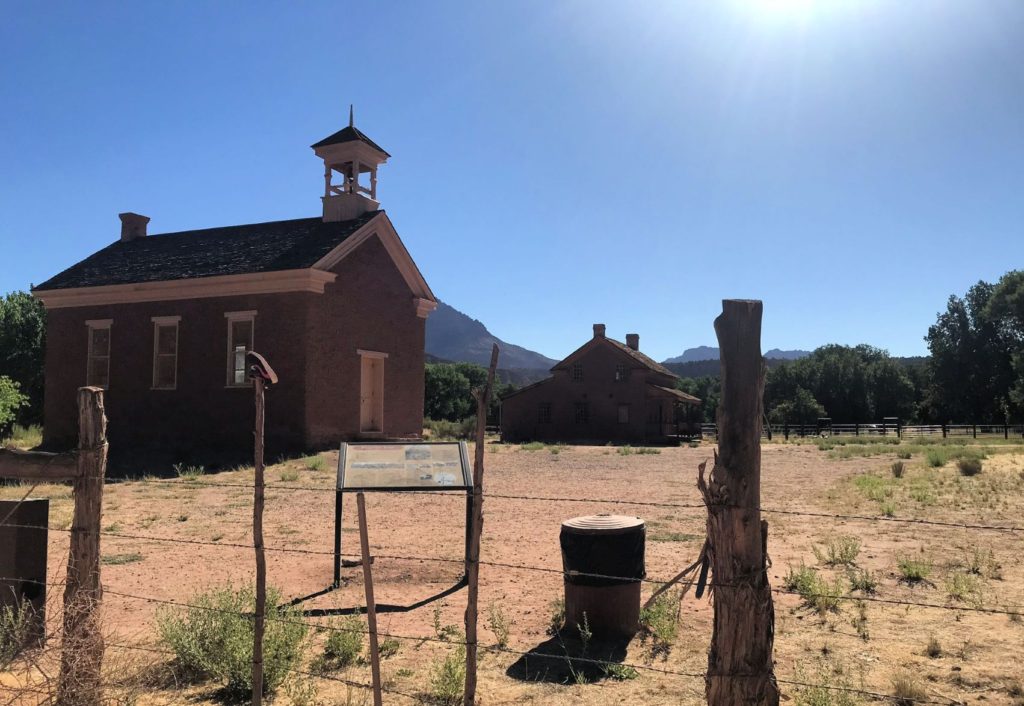
The Alonzo Russell home is a two-story house with a fancy veranda on the front. Right opposite is the Louisa Russell home. The farmland adjoining these homes still has several pieces of iron farming equipment and machinery out in the grass with no one left to put them to use. Last occupied in the 1940s, the remnants of this historic Mormon settlement remind us of a different world before cell phones and the internet.
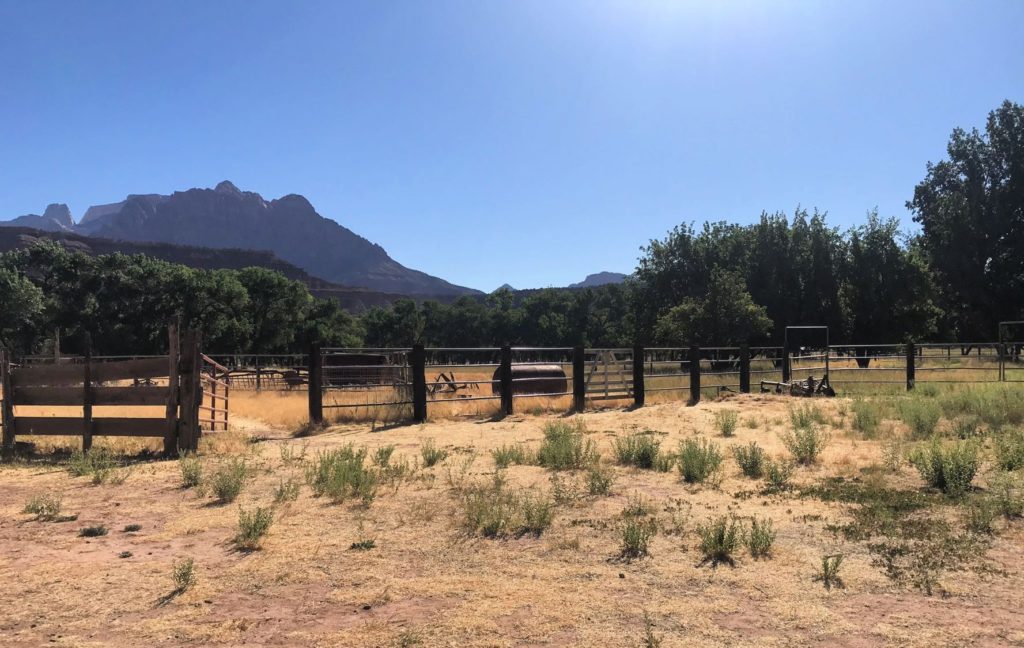
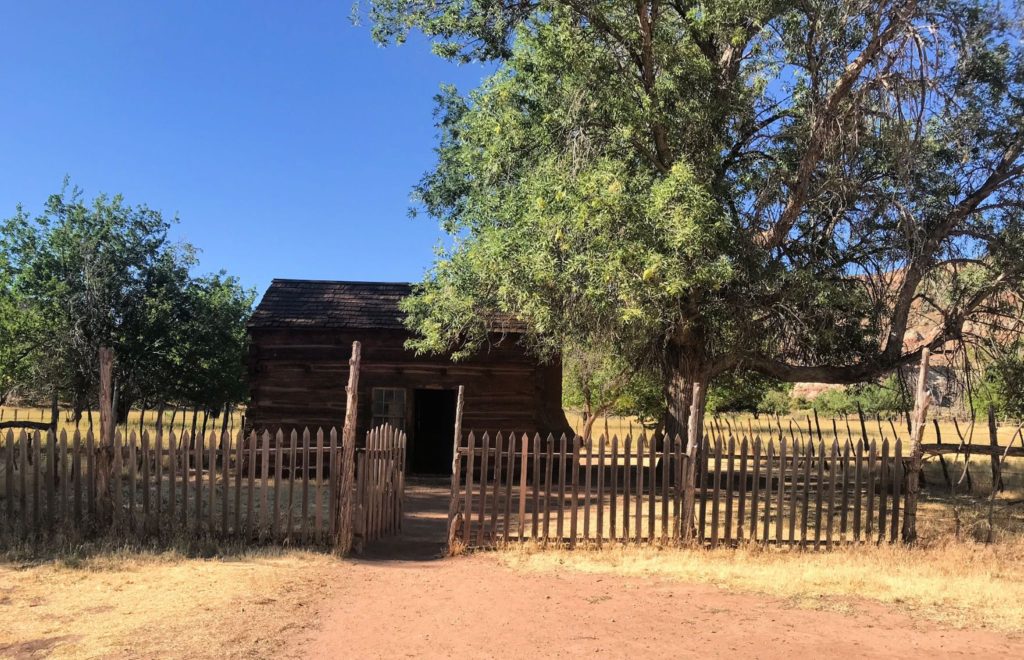
Movies Shot in Grafton
Several American western movies were filmed in Grafton, Utah. According to the Grafton Heritage Partnership Project here is a list of the films all shot in Grafton:
- Old Arizona, 1929 (First talkie movie filmed outdoors) and nominated for five Academy Awards including Best Picture. Starring Warner Baxter (who won the Academy Award for this role as The Cisco Kid), Raoul Walsh, Edmund Lowe, and Dorothy Burgess.
- The Arizona Kid, 1930. Warner Baxter and Carole Lombard.
- Ramrod, 1947. Starring Joel McCrea, Veronica Lake, Preston Foster, Charles Ruggles, Donald Crisp, and Lloyd Bridges.
- Butch Cassidy and the Sundance Kid, 1969. Paul Newman, Robert Redford, Katherine Ross (won four Academy Awards)
- Child Bride of Short Creek, 1981. Diane Lane, Helen Hunt, Christopher Atkins, Conrad Bain.
- The Red Fury, 1984. Wendy Lynne, Calvin Bartlett, Katherine Cannon, Juan Gonzales
History of the Town of Grafton
What was called the Dixie region of Utah was settled by Mormons following the direction of Brigham Young. They originally came to the Utah territory to escape religious persecution from the U.S. In 1859, five Mormon families—the Barney’s, Davies, McFate’s, Platt’s and Shirts—led by Nathan Tenney moved from nearby Virgin to a site one mile downstream of today’s Grafton. The last residents did not leave until 1944.
Cotton, wheat, and alfalfa were grown there originally, but floods, attacks by Indians, and harsh winter weather made farming difficult. In fact, in 1862, the Virgin River flooded and washed away the entire town, but the determined settlers persevered and reestablished Grafton about a mile upstream. Soon cotton production had to take a back seat to food crops.
In 1866, the conflicts with the Black Hawk and others led Brigham Young to instruct the people to combine themselves into bigger towns of at least 150 people. So Grafton was abandoned. However, farmers still came to tend their crops. Eventually, settlers returned and built the adobe schoolhouse (the one pictured above is the original building). Gradually the population shrank again as the young people moved away in search of new farmland.
According the Grafton Heritage Partnership Project, in 1929, the mostly intact and barely inhabited town of Grafton became the setting for the first outdoor talking movie ever filmed. In Old Arizona starred Warner Baxter (who won the Best Actor Academy Award for this role as The Cisco Kid), Raoul Walsh, Edmund Lowe, and Dorothy Burgess.
The remaining buildings in Grafton help preserve the memory of it’s former inhabitants. Towns like this are rare, and becoming even more scarce. Most former pioneer villages were either washed away in floods or have not been preserved. Every year families of former residents of Grafton have a reunion and all gather in the town to remember stories and try to keep the spirit of community alive.
Do you have a ghost town story of your own? Please leave a comment below and enjoy my video!

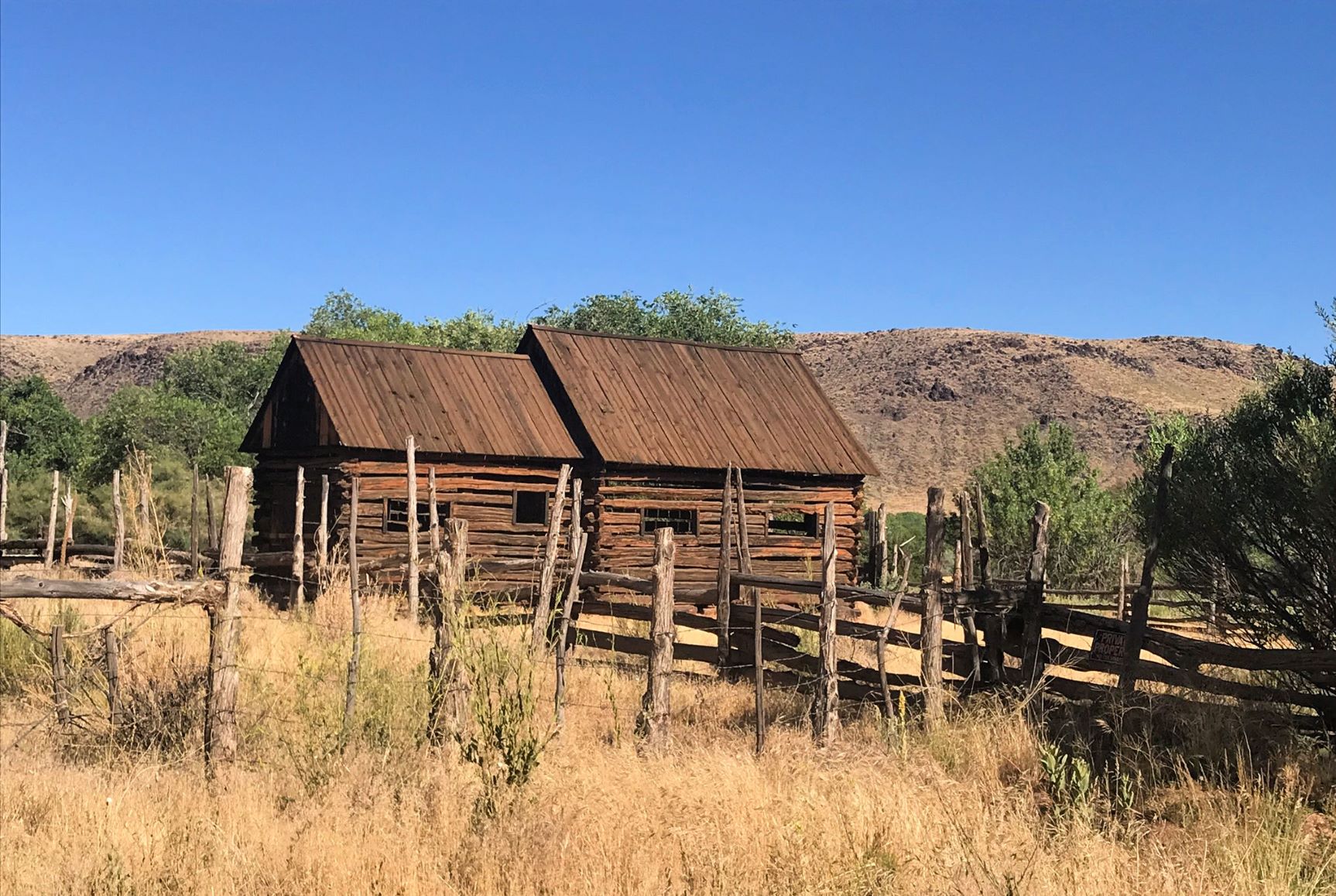
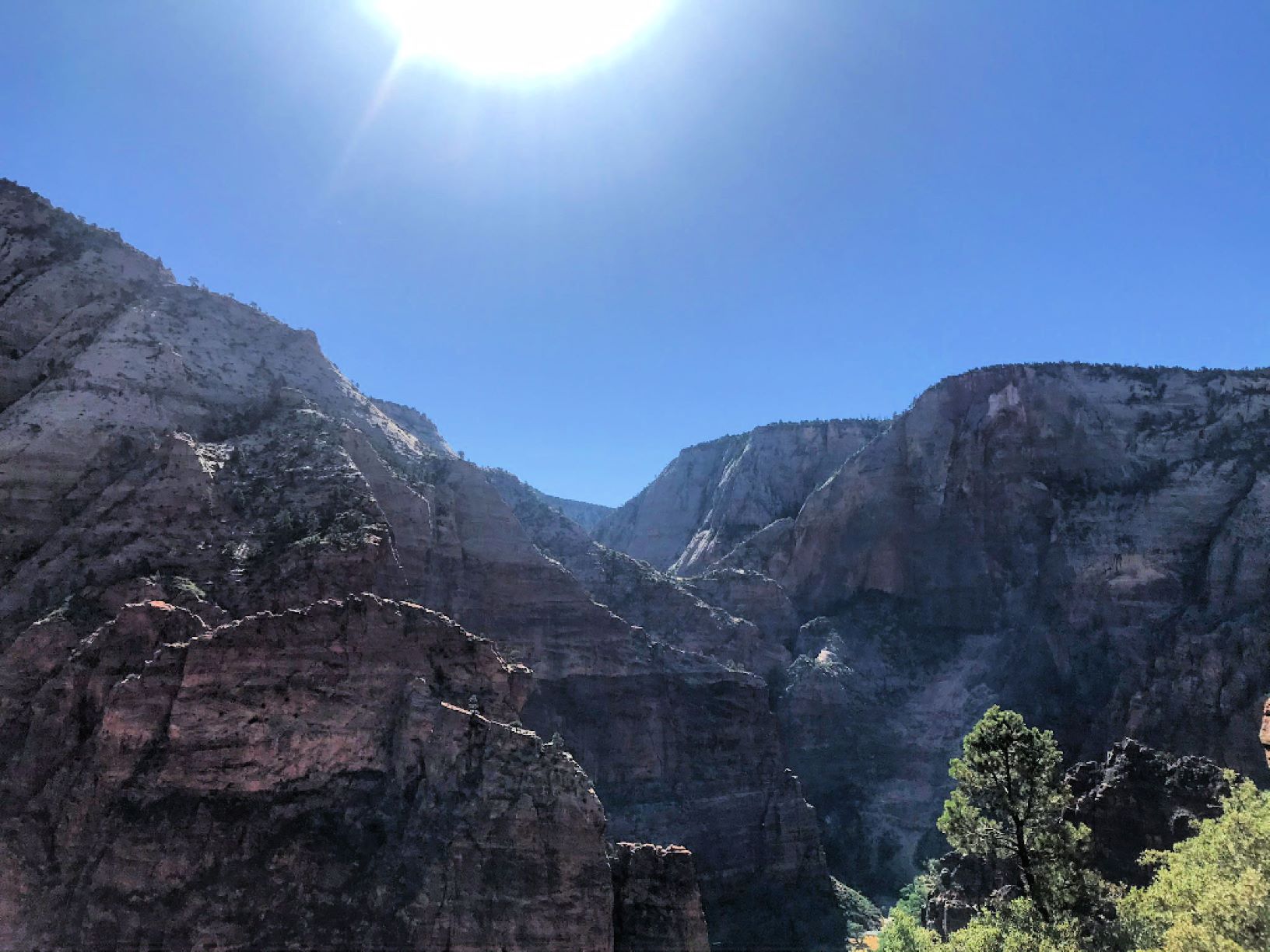
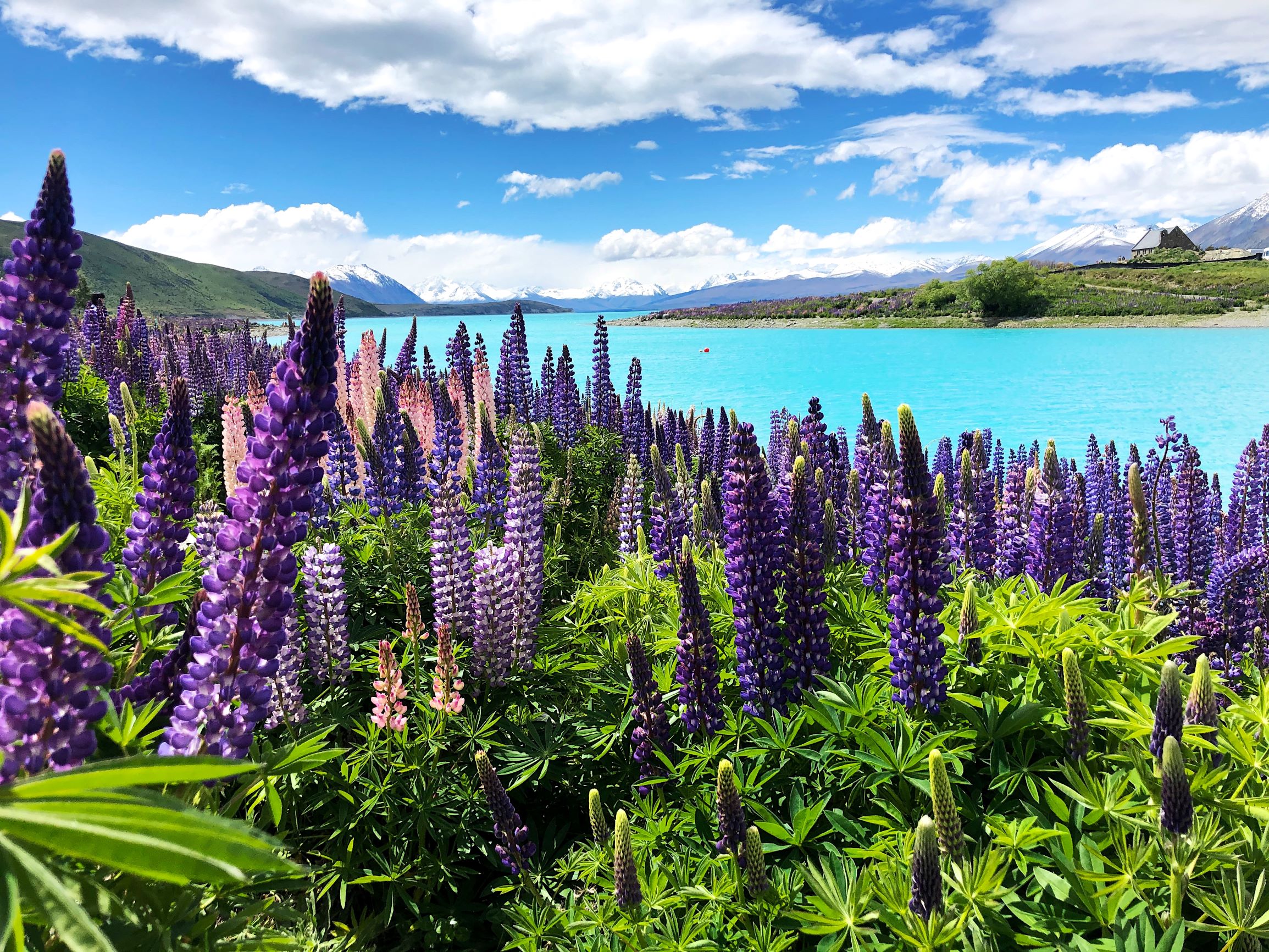
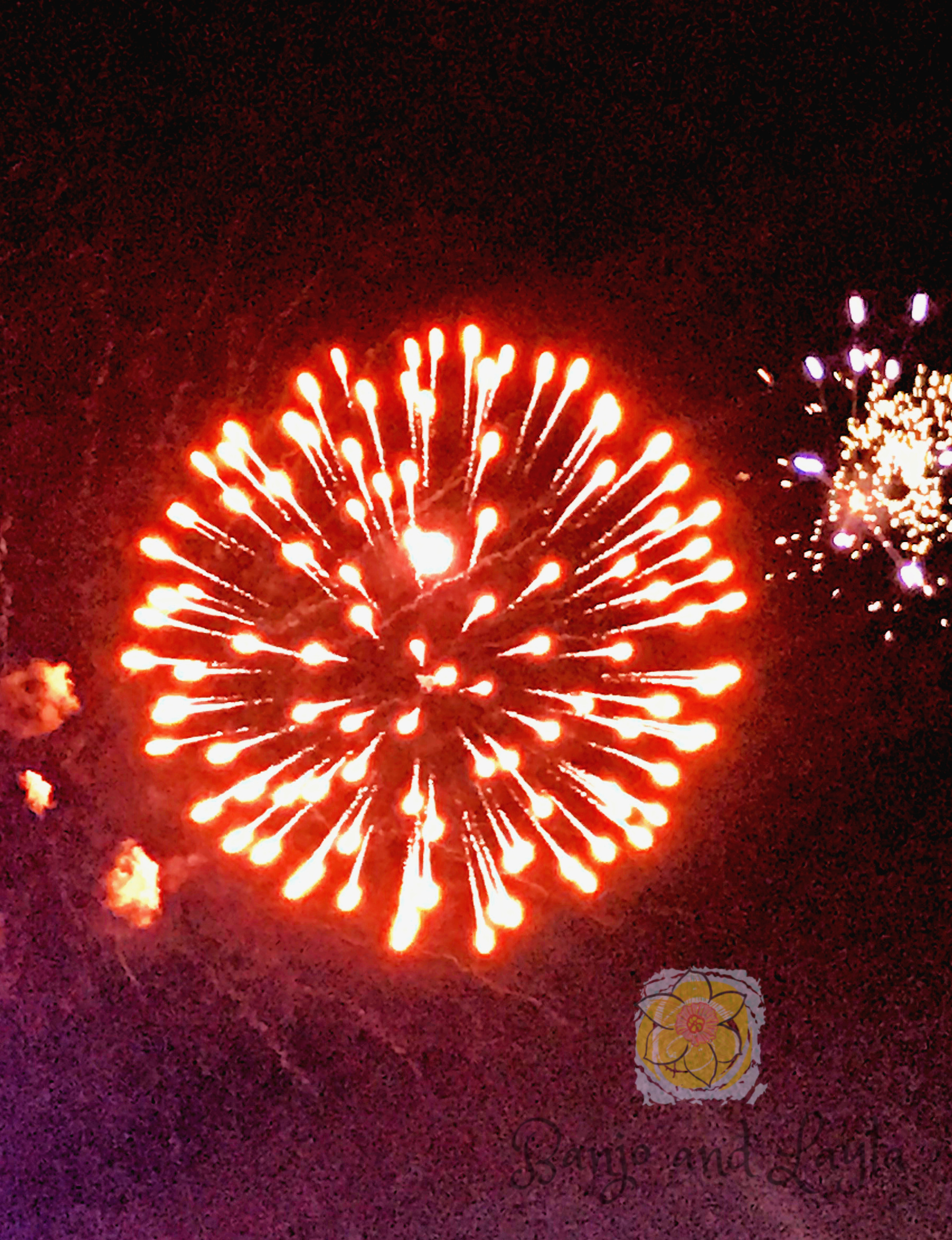


This is right up my alley! I have seen many ghost towns in Colorado now I will have to come up your way!